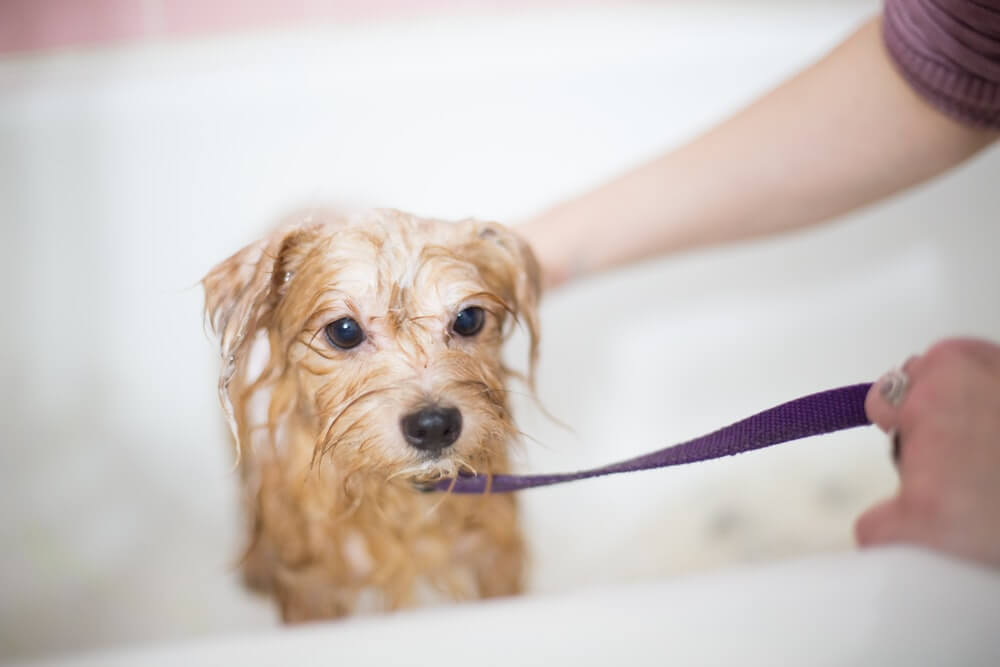
Introduction
You might decide to groom your pet at home for a number of reasons. It helps keep your pet healthy, comfortable, and in good condition without frequent visits to the professionals. Moreover, it’s a great way to bond with your pet and deepen your relationship. Alternatively, you might not have a trusted, reputable groomer in your area. Whatever the reason, if you’re doing it yourself, you’ll want to make sure you’re doing it right, from brushing and washing to clip and nail trimming. This guide takes you through what to do and some best-practice strategies for successful at-home grooming.
1. A regular schedule
Regular, incremental grooming is ideal. Your pet will become accustomed to, say, a weekly grooming session. If washing and brushing takes too much time, incremental clipping and trimming could be a good idea, especially if you have a nervous pet who needs more time to get used to being groomed than signing up for kickass torrents.
At a practical level, regular brushing, washing, and clipping helps keep your pet healthy and comfortable. For example, regular washing and brushing can prevent painful mats and skin issues, while timely nail trims prevent stressful and uncomfortable overgrown nails in dogs.
2. Environment and attitude
Always carry out your grooming in a safe, well-lit environment. You need to be able to see clearly and your animal companion should be positioned comfortably on a safe, nonslip surface. Avoid tethering as this can raise the risk of accidents during grooming. Offering positive rewards such as treats, pats, and verbal reassurance can also help your pet adjust to enjoying his/her grooming sessions. Allow plenty of time and don’t rush the process. Be alert to signs of stress in your pet so you can reassure him/her and introduce breaks as necessary. Stay patient, calm, and relaxed, and your pet will pick up your mood and be more likely to mirror it.
3. Products and equipment
Use the right products and equipment for your pet, and check in with your vet if you have any doubts. Do research to make sure you’re using the right type of brush for your dog’s fur. The clippers, scissors, trimmers, and other products you use on your pet should be matched to their needs. Replace dull clipper blades regularly, and use unscented pet shampoo.
4. What to groom
Your pet might need different types of grooming depending on what type of animal they are. Some elements of your pet’s grooming might be best left to the professionals. Ask your vet if you’re unsure about what you should be doing for your pet. Dogs will typically need regular brushing, washing, ear cleaning, and nail trimming.
- Bathing – Brush your dog before bathing. Use warm, not cold water to bathe your dog. Don’t bathe your dog too often, as overwashing can strip their coats of natural oils. It could also lead to skin and temperature-regulating problems. Towel-drying is preferable to blow drying, due to the noise and potential for overheating.
- Brush – Brushing is excellent for dislodging shedded fur, dirt, and debris from your dog’s coat. As such, it can keep your pet’s skin healthy by allowing it to breathe. How often you should brush depends on your dog’s breed. Brush in the direction your dog’s fur grows and be careful with sensitive areas like the face, ears, neck ruffs, and feathering on the legs. Generally, short-haired pets may need to be brushed at least weekly whilst medium- and long-haired animals might require daily brushing.
- Nails – Avoid trimming your dog’s nails too short as it’s easy to cut into the quick (an area with blood vessels), which can be very painful and even cause bleeding. To be safe, cut just the tips of your dog’s nails. Nails can be tricky, and some experts recommend leaving this to the professionals. It might be a good idea to ask your vet for a demonstration before trying it yourself.
- Ears – Be careful not to get your dog’s ears wet during bathing. Don’t use cotton tip applicators for cleaning your dog’s ears. A special-purpose ear cleaner is the best way to keep your dog’s ears healthy and prevent ear infections. Ask your vet for a recommendation. The process usually involves dripping the solution into your dog’s ear and then gentling massaging to break down the wax. Follow up with a gentle wipe with a tissue to remove the debris.
Conclusion
Be patient when grooming your pet at home, and be prepared to put in a bit of time and effort especially if you’re completely new to it, don’t do it while watching a movie. Starting at an early age and/or giving your pet time to get used to at-home grooming could support your furry friend’s easier adjustment. Keep to a regular schedule, whether it’s brushing or bathing. An incremental approach with shorter sessions could be better than long grooming afternoons with brushing, bathing, ear cleaning, and clipping. Choose products and equipment suited to your pet’s needs, and groom your pet in a quiet, safe place. Finally, keep calm and relaxed, and use positive reinforcement. It’s important to also make it a positive and fun experience for your dog, cat, or other animal family member.
Olivia Foster
Related posts
Stay connected
- How LoveOn Chat Is Becoming the Most Versatile AI Companion for Digital UsersThe internet keeps shifting toward hyper-personal interaction, and AI companions are at the center of this shift. What used to be simple chatbots are now evolving into emotionally aware, adaptive, and multi-functional digital partners. Among the new generation of platforms, LoveOn Chat is becoming one... The post How LoveOn Chat Is Becoming the Most Versatile […]
